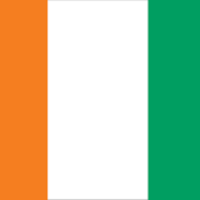The geographical position of the Ivory Coast favors trade (Sagna et al., 2021). As a result, the country has direct contact with major ports of the Gulf of Guinea, making it a center for trade within the West African region (Jasińska & Guei, 2022). It has tropical weather-resistant conditions for producing crops such as cotton and others needed for the textile (Acquaye et al., 2022). Yet they are faced with challenges like inadequate infrastructure and logistics constraints, which can impair the actual outcome of industry growth.
The First 4 tabs
Geography
The Ivory Coast is in West Africa and has borders with Ghana to the east, Liberia and Guinea to the west, Burkina Faso and Mali to the north, and the Atlantic Ocean to the south (Oura et al., 2022). The location of the country makes it a strategic location for commerce through the seaports, among them Abidjan, San Pedro, and so on (Jasińska & Guei, 2022). It has a total area of about 322463 square kilometers of fertile plains and rolling plateaus (Kouakou et al., 2020). The southern half of the country has rich, forested zones, while the northern half is comparatively dry and more of a Savannah state, which gives the country the right climate for agriculture.




Leave a Reply